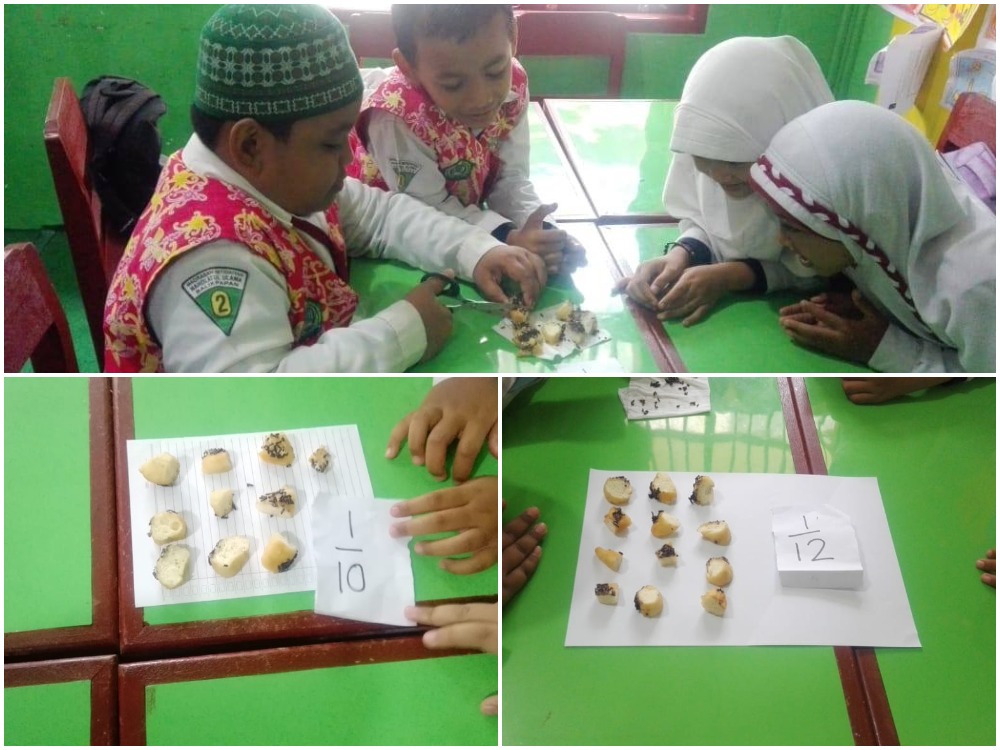Teaching Fractions with Donuts

Lusi Ambarani, a second-grade teacher at Nahdlatul Ulama Islamic School Balikpapan in East Kalimantan, Indonesia, is helping her students to learn about fractions by regularly bringing in one of their favourite snacks: the tasty donut.
“Most students are scared of mathematics – this seems to be a good way for them to enjoy learning mathematics,” said Lusi.
Lusi is one of the teachers who have received training, under Tanoto Foundation’s PINTAR (Promoting Improvement to Innovate, Teach and Reach) program.
PINTAR focuses on training teachers to improve the quality of learning by making lessons more engaging and attractive to students. Teachers are encouraged to develop creative MIKiR teaching methods which involve students in experimenting, creating, direct observation and reflection.
In the case of Lusi’s donut method, she first gets her students to observe using a donut model drawn on a piece of paper which she tacks to the board.
Using the donut model, Lusi begins by demonstrating that if one donut is to be shared equally between two students, the donut would have to be divided into two, and therefore each part of the donut is now worth ½.
The students also learn that if four students were to split a donut equally, they will each get ¼ of the donut. Likewise, five students will get each.
Lusi also teaches the students that the top half of a fraction is called a numerator, while the bottom half is called a denominator.
By using the donut as a visual aid, the students are able to better understand Lusi’s teaching about fractions.
To test their knowledge, Lusi then divides the students up into five groups, and gives each group a real donut and a bread knife. Each group is given the task of cutting and dividing the donut based on the fraction the group is assigned.
The students are most enthusiastic about this part, and it is also fun for them when they are given the opportunity to visit other groups and see their work, Lusi says.
“They are very happy to learn in this way – but the icing on the cake is definitely when they all get to eat the donuts together after the lesson!”

Leave a Reply